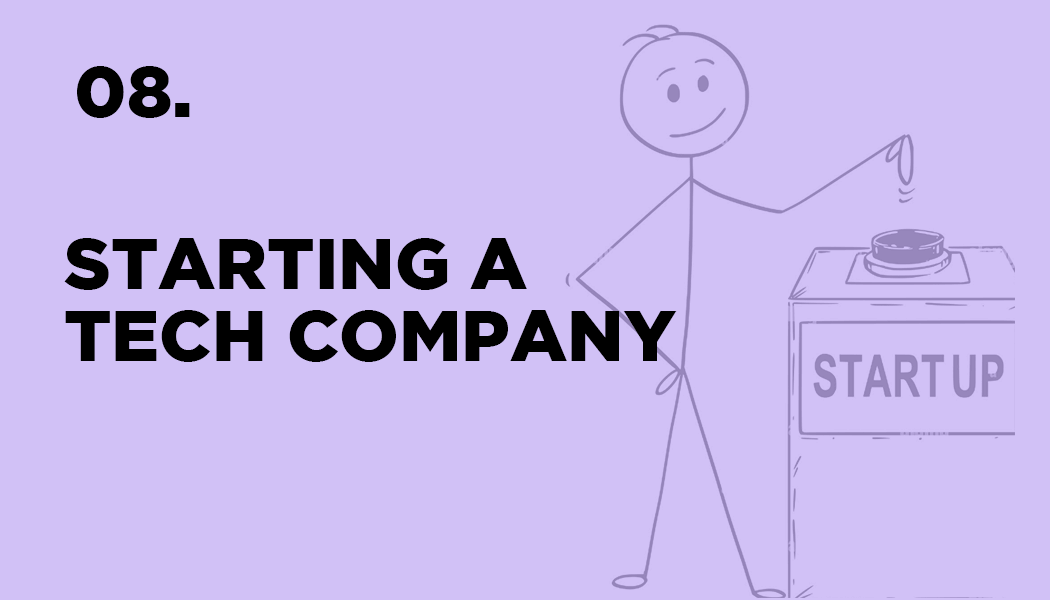· 4 min read for the article Starting a Tech Company
If I could go back and re-launch Roomhints.com/app knowing what I know now, here are the 9 things I would do differently when starting a tech company.
1. Launch ONE feature; the mission-critical feature
Today we are surrounded by successful technology companies with robust products that we forget where they started. What did the first version look like and how did they go about starting a tech company? The first version of my product, Roomhints, had too many features and we got a TON of bad reviews. We were trying to do too much and in return, we did very little. At first, you should list out all the features you think your product needs and build a prototype with only that one mission-critical feature. One feature. For example, let’s take a look at Uber.
i. Features; login, add a credit card, enter an address, enter a destination, connect to the driver, see where the driver is and how far they are to pick you up, cost. Uber’s first version did not have time to the destination or even how much the trip would cost!
ii. For Uber, I would assume the mission-critical feature was getting customers to trust that a mobile app would pick them up. So the one feature they focused on was to enter the address on their phone and order a car.
iii. Once they confirmed that people would trust their app to order a car they can add the next feature and so on.
2. Don’t be overly smart.
For Roomhints, we got obsessed with trying to solve a ridiculously hard problem with technology. We were using computer vision and advanced algorithms to train technology to be an interior designer. We wasted a lot of time working on this technology when we could have focused on an easier, maybe even manual solution that would have provided the customer with value and proved that this was something customers actually wanted. Uber did not try to create their own Google Maps before launching. If they did — it would have taken Uber a lot longer to get started.
3. Focus on product over networking.
Networking and events take up a lot of time. In the beginning, I thought talking to other people could give insight into problems we were having, but looking back we solved each problem by testing directly with our users. It’s great to talk problems out loud but don’t waste your time getting business cards. You know more than they do and most likely you will just get frustrated that they cannot help you solve your problems.
4. Build communities.
Early users of your app, startup founders, and people who reach out to you (investors, press, partnerships.) Find some way to bring value to each of these communities and stay top of mind without having to email them every day. For Roomhints, we started an early user ambassador program. We would then give these early users free products every once and a while; such as throw pillows. Just to say thanks. We started an interior designer community on Meetup, we socialized with startup founders often but we failed at building the people that reached out to our community. I thought they would not care what we are up to each month. Looking back this was the wrong mindset. Who cares if someone cares or not — just send them emails and keep in contact.
5. Listen to your customer with one ear.
This is really hard but essential with starting a tech company. In our research, the customer does not really know what it wants and the customer doesn’t know what you know the product can do.
“If I had asked people what they wanted, they would have said faster horses.” Henry Ford.
Listen with one ear — meaning listen to the fact the customer wants a faster method of transportation. What can be a faster method of transportation — a car.
6. Charge, charge, and charge more.
Yes, there are a lot of great products out there that are based on the Freemium model but for us, the customers we charged gave the greatest insight than the customer who got the product for free. The customer who paid for the service was invested in it. This time investment led to real customer insights. They were either brutally honest about how much it sucked or what they loved.
7. Know your vision.
It takes time to know your vision but setting a clear thesis for your company, building a strong brand mission, and illustrating your vision is essential. Your vision will give boundaries to decisions, focus the idea, motivate employees and investors.
8. Be honest.
There are a lot of problems to solve every day and everyone will have an opinion as to how to solve them. Which is very nice. It’s ok to not do exactly what someone superior thinks you should do. We would politely state “We tested what you suggested and it did not work. In reality, this worked.” They will learn something new and this is also a good test to see that you are working with people of a growth mindset. They don’t mind being wrong if it furthers their understanding.
9. Build lots of prototypes.
Build a prototype to test your new feature/idea/concept before suggesting it to the team. This is so powerful for two reasons.
1. Prototypes illustrate the concept in ways better than text or talking can.
2. When you build the prototype you may see reasons why this won’t work.
Therefore, you have saved valuable time going through discussions with the team.
For more successful tips on starting a tech company check out how to build a strong brand and building loyal customers.










